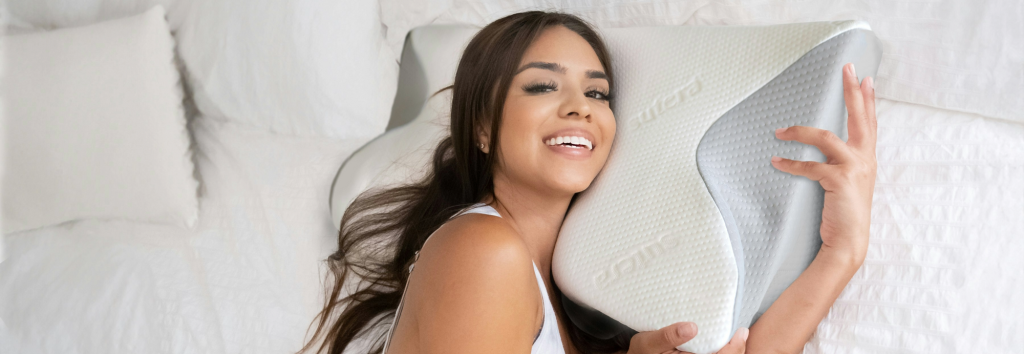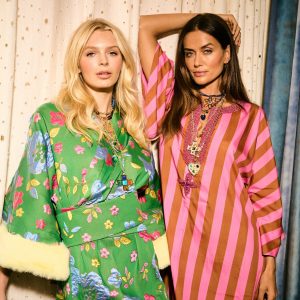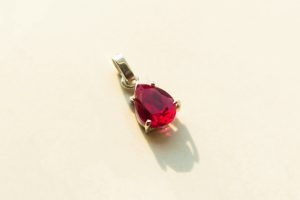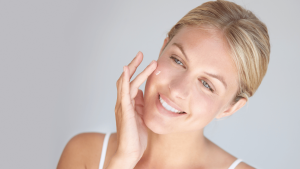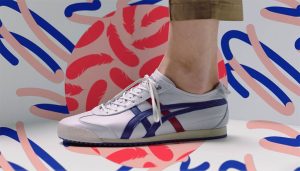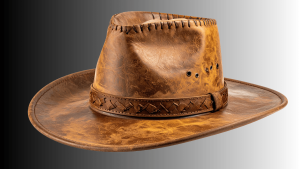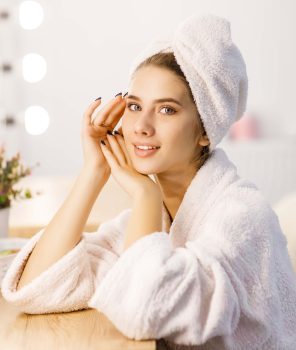Experts predict the minimalism trend is far from over and could become a branding staple. LOGO.com uncovers five brands that took a gamble by going minimal — and it paid off in spades. These brands ditched the frills and shoppers can’t get enough.

Sutera by Brandless
With focus on simplicity, clean lines, and functionality, minimalistic fashion promotes a streamlined and clutter-free aesthetic, allowing personal style to shine through without distraction. Global celebrities and fashion icons including Victoria Beckham, Meghan Markle, and Kanye West, have embraced the “less is more” philosophy, favouring high-quality, versatile pieces that can be worn repeatedly in various settings.
Brand identity expert, Logo.com, reveals five brands that have successfully built their identities around radical minimalism. Richard Lau, the mastermind behind LOGO.com, explains: “We’re bombarded with ads around the clock—they’re on our phones, our computers, even invading our dreams. By keeping things simple, they cut through the noise and provide something genuine for people to connect with. In a world where everyone is shouting, these brands are speaking softly, and we’re all leaning in to listen.”
The key idea behind the minimalistic approach often prioritises sustainability, encouraging consumers to invest in fewer, but higher-quality garments that endure the test of time. Neutral colours, understated patterns, and timeless silhouettes, avoiding overly ornate designs or excess detail are the basic features of minimalist fashion.
Emerging brands like Totême, Nanushka, and Lemaire are gaining traction in the contemporary womenswear market by offering a more accessible and thoughtful approach to fashion. These designers appeal to a style-savvy audience that values quality and minimalism over fleeting trends, often opting for slow fashion rather than fast fashion. Their followers appreciate refined aesthetics without sacrificing taste, focusing on timeless designs that reflect sustainability and a conscious lifestyle.
TABLE OF CONTENTS
- Minimalism is more than an aesthetic
- 5 Ways to Ace the Minimalist Fashion Trend
- 5 brands that are rooted in minimalism
- FAQS on how to integrate minimalism in to our wardrobe
Minimalism is more than an aesthetic
Minimalism has become more than just a design aesthetic—it’s a lifestyle movement focused on intentional living and decluttering both our physical and mental spaces. The philosophy encourages people to embrace simplicity by prioritising what adds value to their lives and removing distractions. Whether it’s downsizing belongings, simplifying home decor, or developing mindful consumption habits, minimalism offers a purposeful and thoughtful approach to living. This trend has gained traction as more people seek balance and clarity in an increasingly complex world.
Per Vogue — ’’Did you know what women’s liberation in the 1920s, the artistic movement in the 1960s, Zen Buddhism in Japan and even the economic recession have in common? They all over time, knowingly or unknowingly, influenced the idea of minimalism in fashion… It champions the idea of wearing basic and simple elements of clothes, and yet creating visually engaging ensembles.’’
Beyond its visual appeal, minimalism offers practical benefits. It fosters a sense of calm by reducing clutter and excess, allowing individuals to focus on what matters. The practice encourages mindful consumption and sustainability, aligning with a growing awareness of environmental issues. Minimalism isn’t just about having fewer things; it’s about making space for meaningful experiences, relationships, and self-reflection. As a result, many find that adopting minimalism leads to improved mental well-being, greater productivity, and a deeper sense of fulfilment.
5 Ways to Ace the Minimalist Fashion Trend
Minimalist fashion is all about simplicity, clean lines, and intentional choices. It’s more than just reducing the number of items in our wardrobe; it’s about curating timeless, versatile pieces that are elegant with minimal effort. Here are five ways to nail the minimalist fashion trend:
- Invest in Quality, Not Quantity
- Stick to a Neutral Colour Palette
- Opt for Timeless, Versatile Pieces
- Embrace Clean Lines and Simple Silhouettes
- Prioritise Functionality and Comfort
5 brands that are rooted in minimalism
Consumer preference for minimalism has surged as people seek simplicity, quality, and sustainability over excess. Minimalism aligns with individuals who prioritise intentional living, valuing timeless, versatile pieces and clean, effective products that emphasise function over flash. In both fashion and beauty, consumers are opting for fewer but better items, focusing on ethical production, durability, and transparency. This shift reflects a broader cultural move towards mindful consumption, where consumers demand more authenticity and less waste from the brands they support.
Richard Lau, President of LOGO.com, commented: “What we’re seeing with these brands is nothing short of a revolution in consumer psychology. They’ve tapped into a growing desire for authenticity and simplicity in a world that’s increasingly complex and artificial. Moving forward, we might see a shift where the most successful brands are those brave enough to whisper their truth rather than shout the loudest. This minimalist trend isn’t over and it’s not going away.”
Muji’s “No Brand” Philosophy

Muji
Japanese retailer Muji has built its global identity around the concept of minimalism, offering products that emphasise simplicity, functionality, and quality. From its inception, Muji’s philosophy has been rooted in the idea of “no-brand quality goods,” rejecting branding and excessive ornamentation. This minimalist ethos is integrated throughout their product lines, which range from apparel to household items and stationery. By stripping away the non-essential and focusing on utility, Muji has cultivated a loyal following among consumers who value understated elegance and purposeful design.
The minimalist design approach that Muji champions is evident in every aspect of its product creation. Clean lines, neutral colours, and a lack of excess define Muji’s aesthetic, aligning with the core principles of Japanese minimalism. This simplicity in design extends beyond products to Muji’s stores and packaging, reinforcing their commitment to sustainability and mindful consumption. Muji’s design philosophy attracts a consumer demographic that appreciates functionality, timelessness, and environmental responsibility—appealing to urban dwellers, young professionals, and individuals seeking a clutter-free, intentional lifestyle.
As of 2024, Muji has strategically positioned itself in the global market as a premium yet accessible lifestyle brand, competing with other minimalist-focused retailers such as IKEA and Uniqlo. The company’s revenues have seen consistent growth, driven by its growing international footprint and its alignment with a consumer demand for sustainable, minimalist products. With its strong brand identity and commitment to minimalist philosophy, Muji has continued to thrive despite challenges in the retail industry, leveraging its simplicity and functionality as key differentiators in an increasingly crowded market.
Brandless and the $3 Revolution
When Brandless launched in 2017 with high-quality essentials without the typical markup associated with big brands, many were sceptical. However, their minimalist approach to both branding and pricing struck a chord with consumers seeking simplicity and transparency, leading to rapid growth and challenging traditional retail models.
Founded with the mission of eliminating the “brand tax”—the cost consumers pay for a product due to branding—Brandless delivers simple, well-made products at affordable prices. Their minimalist philosophy is reflected in their no-frills packaging, clean design, and the elimination of unnecessary features. This approach aligns with the growing trend of consumers seeking transparency, functionality, and value over branding or excess.
Brandless’s minimalist design extends beyond just packaging. The products are streamlined, focusing on functionality and quality while avoiding unnecessary embellishments. From kitchenware to personal care items, Brandless emphasises simplicity in both form and function. This design ethos appeals to a consumer demographic that values affordability, sustainability, and practicality. Typically, Brandless attracts younger, cost-conscious consumers who are drawn to brands that align with their values of eco-consciousness and minimalism.
In 2024, Brandless continues to carve out its niche in the market by positioning itself as an affordable, ethical alternative to traditional retail brands. The company has leveraged its minimalist identity to differentiate itself in a crowded marketplace, with revenues driven by a loyal customer base that values the simplicity and transparency of its offerings. As demand for sustainable and ethically produced goods increases, Brandless is poised for steady growth. Its competitive pricing and focus on essential, well-designed products have enabled it to maintain relevance and secure a strong foothold in the evolving retail landscape.
The Ordinary’s Clinical Simplicity
The Ordinary disrupted the skincare industry by stripping away fancy packaging and marketing jargon. Their products feature clinical names and minimalist design, focusing solely on active ingredients. This approach has earned them a devoted following and forced larger brands to reconsider their own strategies.
The Ordinary, a skincare brand under Deciem, offers science-based products that cut through the noise of the beauty industry. The brand focuses on delivering high-quality skincare solutions at affordable prices by emphasising transparency and simplicity in its formulations. Rather than relying on extravagant marketing or luxury branding, The Ordinary highlights the efficacy of key active ingredients.
The design philosophy of The Ordinary mirrors its minimalist identity. The brand’s packaging is simple and functional, with clinical-looking bottles and no-frills labels that provide straightforward information about the ingredients and their concentration. This focus on substance over style has appealed to a consumer demographic that values transparency and efficacy over hype.
By 2024, The Ordinary positioned itself as a disruptor in the beauty industry, with a market strategy focusing on affordability and transparency. The brand’s minimalist ethos, combined with its commitment to delivering effective products, attracted a loyal customer base. As consumers continue to demand straightforward, results-driven skincare, The Ordinary’s revenues have shown steady growth, driven by its international expansion and increasing market share. With minimal marketing spend and a focus on scientific integrity, The Ordinary remains a leader in the affordable skincare segment, outpacing many traditional beauty brands.
Everlane’s “Radical Transparency”
Everlane took minimalism beyond aesthetics by embracing “radical transparency” in their supply chain and pricing. Their simple designs are complemented by detailed breakdowns of production costs, appealing to consumers who value ethical practices and straightforward communication.
Everlane has built its identity by championing transparency, ethical production process, and timeless pieces. The brand rejects fast fashion in favour of high-quality, versatile apparel that can be worn for years. This minimalist philosophy is reflected in its “radical transparency” approach, where Everlane reveals the cost of each product’s materials, labour, and transport. By focusing on simplicity and honesty, Everlane appeals to consumers who are looking for well-made, sustainable options without the typical retail markups.
The minimalist design approach at Everlane extends to its apparel, which is characterised by clean lines, neutral colours, and classic silhouettes. Rather than chasing seasonal trends, Everlane produces wardrobe staples—such as t-shirts, jeans, and outerwear—that prioritise functionality and longevity. This understated style appeals to a consumer demographic that values simplicity, sustainability, and ethical production.
In 2024, Everlane positioned itself as an ethical fashion brand, competing with minimalist, sustainability-focused companies like Patagonia and Reformation. The company’s revenues have shown consistent growth as it expands its product offerings and enters new markets. By staying true to its minimalist principles and emphasising transparency, Everlane has cultivated a loyal customer base that trusts the brand’s commitment to ethical production and sustainable practices. As consumers continue to seek out brands that align with their values, Everlane’s market positioning ensures steady growth and relevance in the fashion industry.
Aesop’s Anti-Marketing Stance

Aesop
Luxury skincare brand Aesop has built a cult following despite shunning traditional advertising. Their minimalist brown bottles and focus on product efficacy over flashy marketing have created a distinct brand identity that sets it apart in the competitive beauty industry. The brand’s minimalist ethos is evident in everything from its product design to its store interiors, which emphasise clean lines, natural materials, and subtle aesthetics. Rather than relying on flashy advertising or celebrity endorsements, Aesop allows its products to speak for themselves, using a “less is more” philosophy that aligns with a sophisticated, discerning consumer base. This approach has given the brand a sense of exclusivity and quiet confidence that aligns with consumers who value thoughtful simplicity and quality.
Aesop’s minimalist design is not just skin-deep. Its product packaging features simple, apothecary-style brown bottles. This lack of overt branding and marketing clutter reinforces Aesop’s commitment to an anti-marketing stance, where substance triumphs over style. Aesop appeals to a consumer demographic that values quality, craftsmanship, and the rituals of self-care, particularly among urban professionals, creatives, and those seeking an alternative to mass-market beauty.
In 2024, Aesop’s market positioning remains strong as a luxury skincare brand with a minimalist identity. The company’s revenues experienced consistent growth due to its international expansion and its unique, anti-marketing strategy. Despite the growing competition in the premium skincare sector, Aesop has maintained its allure by focusing on experiential retail, sustainability, and high-quality formulations.
FAQS on how to integrate minimalism in to our wardrobe
- What does a minimalist wardrobe mean?
A minimalist wardrobe focuses on owning fewer, higher-quality pieces that are versatile, timeless, and serve a functional purpose. The goal is to reduce clutter and simplify clothing choices, allowing you to invest in pieces that can be styled multiple ways and used in various settings. - How do I start building a minimalist wardrobe?
Begin by decluttering your current wardrobe. Remove items you rarely wear, duplicates, or anything that doesn’t fit or serve a clear purpose. After decluttering, invest in essential, neutral basics like well-fitting jeans, classic shirts, and versatile outerwear. These should be timeless pieces that match your lifestyle. - What are the key pieces for a minimalist wardrobe?
Key pieces include versatile basics such as a white t-shirt, black trousers, a tailored blazer, a neutral sweater, classic jeans, and a simple pair of shoes (like loafers or white sneakers). These items can be mixed and matched to create a variety of outfits for different occasions. - How can I make my wardrobe more versatile?
To increase versatility, focus on choosing neutral colours like black, white, grey, beige, or navy. These colours pair well with each other and can be layered or accessorised differently for new looks. Invest in quality, multipurpose items that work for casual, professional, and evening wear. - How often should I buy new clothes with a minimalist wardrobe?
In a minimalist wardrobe, the goal is to buy less but buy better. This means purchasing high-quality items that last longer and are versatile enough to wear frequently. You should only buy new clothes when you need to replace worn-out items or when you identify a clear gap in your wardrobe. - Can I incorporate trends into a minimalist wardrobe?
Yes, but it’s best to incorporate trends sparingly. Minimalist wardrobes focus on timelessness, but if there’s a trend that aligns with your style, consider investing in a piece that can integrate well with your existing basics and be worn long-term, even after the trend fades. - How do I balance style and minimalism?
To maintain style in a minimalist wardrobe, focus on quality over quantity and look for pieces with interesting textures, high-quality fabrics, and well-constructed fits. Use accessories like scarves, belts, or jewellery to add subtle flair without compromising simplicity. - Can a minimalist wardrobe be sustainable?
Yes, a minimalist wardrobe can be highly sustainable. By buying fewer items and choosing well-made pieces that last, you reduce the need for constant consumption. Additionally, opting for sustainable or ethically-produced clothing supports eco-friendly practices and reduces your environmental impact. - What should I avoid when creating a minimalist wardrobe?
Avoid impulse buying, following fleeting trends, and accumulating duplicates. A minimalist wardrobe requires thoughtful, intentional shopping. Each piece should serve a distinct purpose and be versatile enough to be worn in different outfits. - How can I maintain a minimalist wardrobe long-term?
To maintain a minimalist wardrobe, regularly assess your clothing needs and avoid unnecessary purchases. Focus on taking care of your clothes to extend their lifespan, and when you do shop, continue to prioritise quality, versatility, and timelessness. Staying disciplined about what you add to your wardrobe will help you sustain its simplicity.
Read More:
Jasmeen Dugal is Associate Editor at FashionABC, contributing her insights on fashion, technology, and sustainability. She brings with herself more than two decades of editorial experience, working for national newspapers and luxury magazines in India.
Jasmeen Dugal has worked with exchange4media as a senior writer contributing articles on the country’s advertising and marketing movements, and then with Condenast India as Net Editor where she helmed Vogue India’s official website in terms of design, layout and daily content. Besides this, she is also an entrepreneur running her own luxury portal, Explosivefashion, which highlights the latest in luxury fashion and hospitality.


